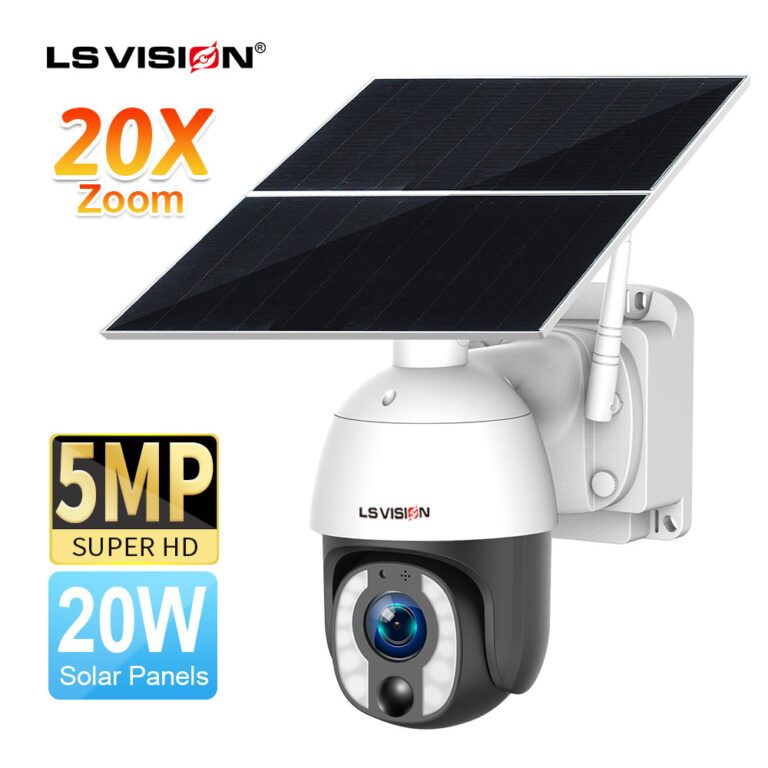Video output signal
For cámaras de seguridad, the light passes through the lens and hits the image sensor inside the camera. At this time, it is still an analog signal. It is converted into a digital signal by A/D, processed by ISP or DSP, and Again the video signal is output.
If D/A conversion is performed before output, the digital signal is converted into an analog signal for output. For this type of camera, we will call it an analog camera. The common ones include CVBS analog standard definition cameras (obsolete on the market), XVI/TVI/CVI/AHD, and other high-definition analog cameras
Table of Contents
Toggleif the output is a digital signal, it is called a digital camera. For example, SDI cameras are a member of digital cameras and are often used in video conferencing. According to different transmission rates, SDI can be divided into SD-SDI, HD-SDI, and 3G-SDI. The SDI cameras usually used for security are HD-SDI or 3G-SDI.
In the third case, to reduce the amount of data transmitted, the digital signal will be encoded and compressed according to certain method standards and then output (such as H.264, H.265, H.266). However, this camera itself is a network camera.
Exterior
According to the camera’s shell, it can be divided into bolt, barrel, hemisphere, ball, pan/tilt, etc.
Bullet cameras on the market, also called box cameras, look just like boxes and can be equipped with C/CS interface lenses without the need for additional fill light. The corresponding interface of the camera is at the end. If the installation scene is outdoors, the camera requires an additional protective cover to protect the camera.
A tube camera generally refers to an infrared gun camera, a lens, an infrared or white light fill light, and the camera itself is combined to achieve an IP66 or IP67 protection level. The various interfaces of the camera are detached from the tail wires at the tail. Commonly used in outdoor environments. Suitable for wall mounting or ceiling mounting, some barrel machines come with mounting brackets.
In some installation environments, such as ceilings that are not suitable for the installation of gun-type or barrel-type cameras, a dome-type camera is required to facilitate suspended or embedded installation on the ceiling. The internal structure of the camera is the same as the dome and barrel cameras in terms of function.
A camera, a pan/tilt that controls the camera’s up and down rotation, additional fill lights, etc. are combined and stuffed into a spherical housing. This kind of camera is generally called a dome camera. In addition to the functions of general cameras, dome cameras also support PTZ, which means horizontal left and right rotation (Pan), vertical up and down rotation (Tilt), lens zoom, focus (Zoom), and other functions to achieve 360-degree omnidirectional, long-distance No blind spot monitoring. The dome camera is equipped with different mounting brackets, which can support wall mounting, ceiling mounting, or embedded installation.
If a camera with a PTZ function does not have an additional spherical protective cover, the camera is placed directly on the PT pan/tilt. Such a camera is called a pan/tilt camera. Except for the different appearance, it is the same as the dome camera. The advantage of cameras with this appearance is that they are easy to install on horizontal platforms, such as car roofs and various operating platforms.
Pixels/Resolution
Whether it is network, analog, or digital cameras, they can be classified according to the pixels and resolutions they support. From hundreds of thousands of pixels SD cameras to 12 million 4K resolution HD cameras.
For general standard-definition cameras, if they are analog, we will call them CVS or 960H cameras directly. They will not be named directly by pixels. If it is a network camera, call it a standard definition or SD camera. 720 resolution and those above megapixels are directly named pixels/resolution. For example, 1 million, 2 million, 3 million, 5 million, 8 million, and 12 million, if named by resolution, it is 720P, 1080P, 4K, or HD, FHD, UHD.
Fill light
The camera produces color images during the day. At night, when the ambient light is very weak or completely dark, a fill light is needed to achieve the image. Of course, some cameras, such as starlight-level ones, can still present colorful video images as long as there is weak light. Depending on whether additional fill light is needed, cameras can be divided into infrared cameras (also divided into 850 nanometers infrared and 940-nanometer infrared), white light fill light/warm light cameras, and starlight full-color cameras.















